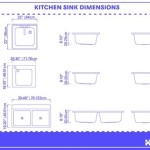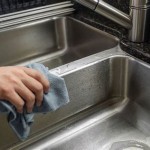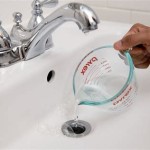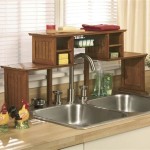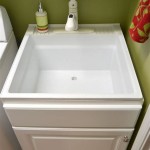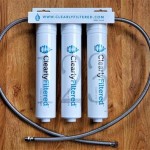Washer Dryer Combo Hook Up To Sink: A Comprehensive Guide
Space-saving laundry solutions are becoming increasingly popular in apartments, small homes, and recreational vehicles (RVs). A washer dryer combo unit offers a convenient way to wash and dry clothes in a single appliance, eliminating the need for a separate dryer and venting. While some units require dedicated water and drain connections, certain models can be adapted to hook up to a sink, providing flexibility when permanent plumbing is unavailable or inconvenient. This article will provide a comprehensive overview of connecting a washer dryer combo to a sink, outlining the necessary components, procedures, potential challenges, and considerations for a successful installation.
Understanding the Basics: Washer Dryer Combo Units
A washer dryer combo unit integrates the functions of a washing machine and a dryer into a single appliance. These units typically operate using a condenser drying system, which eliminates the need for an external vent to expel hot, moist air. Instead, the unit cools and condenses the moisture produced during the drying cycle, converting it back into water that is then drained away. This feature makes them particularly suitable for installations where venting is difficult or impossible. Two main types of combo units exist: all-in-one and stacked. All-in-one units perform both washing and drying in the same drum, while stacked units have separate washing and drying compartments. The principles discussed here apply primarily to all-in-one ventless combo units suitable for sink connection.
Before considering a sink hookup, it is crucial to identify the type of washer dryer combo unit. This determination is based on its vent requirements. Vented units are unsuitable for sink connections. Ventless condenser units are the ideal choice for this type of setup. Refer to the manufacturer's specifications and user manual to determine the venting requirements and water connection compatibility of the specific model.
Essential Components for Sink Hookup
Successfully connecting a washer dryer combo to a sink requires specific components beyond the unit itself. These components facilitate the water supply and drainage aspects of the installation. Understanding these items is crucial for a smooth and functional setup.
Faucet Adapter: This adapter connects the washing machine's water inlet hose to the sink faucet. The adapter typically features a threaded connection that screws onto the faucet and a quick-connect fitting for the washing machine hose. Different faucet types require different adapters; it is important to choose an adapter compatible with the sink faucet’s threading and diameter.
Water Inlet Hose: This hose carries the water from the faucet to the washing machine. The hose should be of sufficient length to reach comfortably from the faucet to the machine's water inlet valve without excessive bending or kinking. Consider using a reinforced hose to prevent bursting under pressure.
Drain Hose Extension: The washer dryer combo will come with a drain hose. However, in many sink hookup situations, the original drain hose will be too short to reach the sink drain. A drain hose extension can be added to increase the length of the hose. Ensure the extension is compatible with the existing drain hose and is securely clamped to prevent leaks.
Hose Clamps: Hose clamps are used to secure the hoses to the faucet adapter, the drain hose, and the drain hose extension. They prevent leaks at these connection points. Select appropriate-sized clamps that provide a tight and secure fit.
Sink Drain Adapter (Optional): Depending on the sink drain's configuration, a sink drain adapter may be needed to accommodate the washing machine drain hose. This adapter facilitates a secure and leak-proof connection to the sink drain. It prevents the drain hose from dislodging during the wash cycle.
Bucket or Basin (Optional): As a safety precaution, place a bucket or basin underneath the sink connections to catch any minor leaks that may occur. This can help prevent water damage to the surrounding area.
The Step-by-Step Installation Process
Proceeding with the sink hookup requires careful attention to detail and adherence to safety guidelines. The following steps outline the installation process.
Step 1: Preparation: Gather all necessary components, including the faucet adapter, water inlet hose, drain hose extension, hose clamps, sink drain adapter (if needed), and tools such as pliers or a screwdriver. Ensure the washer dryer combo is positioned near the sink. Clear the area around the sink to provide adequate workspace.
Step 2: Faucet Adapter Installation: Remove the aerator from the sink faucet. Attach the faucet adapter to the faucet. Tighten the adapter securely using pliers or a wrench, but avoid over-tightening, which can damage the faucet or adapter. Ensure the adapter is compatible with the faucet's threading and provides a secure connection.
Step 3: Water Inlet Hose Connection: Connect one end of the water inlet hose to the faucet adapter. Secure the connection with a hose clamp. Connect the other end of the water inlet hose to the water inlet valve on the back of the washer dryer combo. Tighten the connection securely with a hose clamp. Make sure the hose is not twisted or kinked.
Step 4: Drain Hose Connection: Connect the drain hose extension to the existing drain hose of the washer dryer combo. Secure the connection with a hose clamp. Place the open end of the drain hose extension into the sink drain. If using a sink drain adapter, connect the adapter to the sink drain and then insert the drain hose into the adapter. Ensure the drain hose is securely positioned and will not dislodge during the wash cycle.
Step 5: Testing and Leak Check: Turn on the sink faucet to allow water to flow into the washer dryer combo. Start a short wash cycle to test the connections and ensure proper water flow and drainage. Carefully inspect all connections for leaks. Tighten hose clamps as needed to eliminate any leaks. Monitor the unit during the wash cycle to ensure the drain hose remains securely in place and the sink drain can handle the water flow.
Step 6: Final Adjustments: Once the system is tested and leak-free, make any necessary adjustments to the hose positions to prevent kinks or obstructions. Secure the hoses with clips or ties to keep them neatly organized and prevent them from interfering with sink usage. Place the bucket or basin under the connections as a precautionary measure.
Potential Challenges and Solutions
While connecting a washer dryer combo to a sink can offer a convenient solution, certain challenges may arise during the installation process. Understanding these potential problems and their solutions can help ensure a successful outcome.
Incompatible Faucet: The sink faucet may not be compatible with standard faucet adapters due to its shape, size, or threading. In this case, explore alternative adapter options or consider replacing the faucet with a model that is compatible with washing machine connections. Consult with a plumbing professional for guidance on faucet replacement options.
Insufficient Water Pressure: Water pressure at the sink may be insufficient to operate the washer dryer combo effectively. This can result in slow fill times or error messages. Consider installing a water pressure booster pump to increase the water pressure at the sink. Check the water pressure requirements of the washer dryer combo and ensure the sink's water pressure meets those requirements.
Drainage Issues: The sink drain may not be able to handle the volume of water discharged by the washer dryer combo, leading to slow drainage or backups. Ensure the sink drain is clear of obstructions. Consider using a larger sink drain adapter or consulting with a plumbing professional to improve the sink's drainage capacity.
Hose Leaks: Leaks can occur at any of the hose connections. Tighten hose clamps to ensure a secure seal. If leaks persist, replace the hose clamps or the hoses themselves. Ensure the hoses are not damaged or worn.
Washer Dryer Combo Weight: Some washer dryer combo units can be quite heavy, which can make them challenging to move and position near the sink. Ensure the floor is level and can support the weight of the unit. Use a dolly or furniture sliders to move the unit safely. Enlist assistance from another person to lift and position the unit.
Safety Considerations
Safety is paramount when connecting a washer dryer combo to a sink. Taking appropriate precautions can mitigate potential risks and ensure a safe installation.
Electrical Safety: Ensure the washer dryer combo is properly grounded to prevent electrical shock. Use a properly grounded electrical outlet and avoid using extension cords. If unsure about the electrical connections, consult with a qualified electrician.
Water Safety: Turn off the water supply to the sink before beginning the installation process. This will prevent accidental flooding. Use caution when working with water and electrical connections to avoid electrical shock.
Hose Security: Secure all hose connections tightly to prevent leaks. Periodically inspect the hoses for wear and tear and replace them as needed. A burst hose can cause significant water damage.
Manufacturer's Instructions: Always follow the manufacturer's instructions for installation and operation. The manufacturer's instructions provide specific guidance for the specific model and address any unique safety considerations.
Professional Assistance: If uncomfortable performing the installation, consider hiring a qualified plumber or appliance installer. Professional installers have the expertise and tools to ensure a safe and proper installation.
By carefully following these guidelines, connecting a washer dryer combo to a sink can provide a convenient and space-saving laundry solution. However, thorough planning, proper component selection, and adherence to safety precautions are essential for a successful outcome.
Plumbing A Washer Dryer Combo Into Kitchen Sink Diy Home Improvement Forum

8 Laundry Room Ideas For Small Condos And Apartments

Stacked Laundry Center Installation

Moving A Washer Dryer For Laundry Room Remodel In Dallas

Plumbing For Double Washer And Dryer A New Trend All Things Thrifty
2-840x500.jpg?strip=all)
What You Should Know About Installing A Washer Dryer In The Bathroom

Tips On Adding A Washer Dryer In The Bathroom

The Utility Sink Or Laundry Gets You Organized Sweeten Com

The Best Washer Dryer Combo But We Don T Recommend It Reviews By Wirecutter

How To Support A Laundry Room Countertop Over Washer And Dryer Rambling Renovators
